The construction of an acoustic guitar involves numerous elements, each contributing to the instrument's overall sound quality. Among these components, the back and side woods play a crucial role in shaping the guitar's tone and resonance. Different species of timber offer distinct tonal characteristics, making them suitable for various playing styles and musical genres. In this article, we delve into the properties of several popular woods used for acoustic guitar backs and sides, including Indian Rosewood (Dalbergia latifolia), American Mahogany (Swietenia macrophylla), African Mahogany (Khaya spp.), Maple (Acer spp.), Koa (Acacia koa), Padauk (Pterocarpus soyauxii), Exotic Ebony (Diospyros spp.), and Black Limba (Terminalia superba). We'll also explore their geographical origins, sustainability factors, and the debate between laminated and solid wood construction.
Indian Rosewood (Dalbergia latifolia)
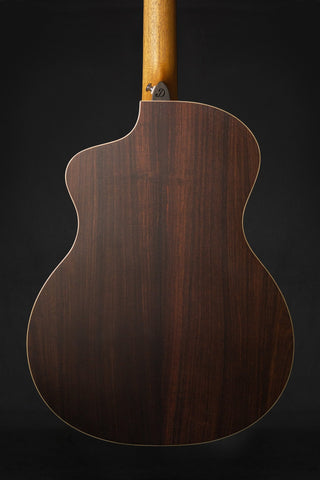
Geographical Origin: Indian Rosewood, also known as East Indian Rosewood, primarily grows in the Indian subcontinent, particularly in India and Sri Lanka.
Tonal Characteristics: Indian Rosewood is renowned for its rich, warm, and complex tonal qualities. It produces a well-balanced sound with a strong bass response, clear midrange, and sparkling highs. This makes it suitable for a wide range of playing styles, from fingerstyle to strumming.
Sustainability: Indian Rosewood is listed on CITES (Convention on International Trade in Endangered Species) Appendix II due to concerns about overexploitation. Sustainable sourcing and responsible forestry practices are essential to ensure its long-term availability.
American Mahogany (Swietenia macrophylla)
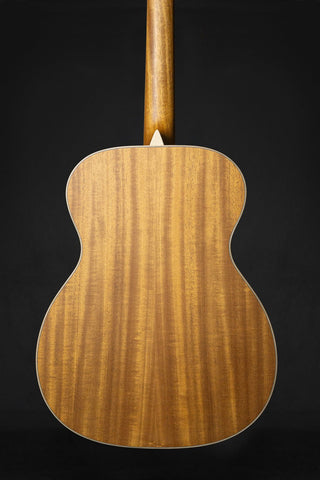
Geographical Origin: American Mahogany is native to Central and South America, including countries like Brazil, Mexico, and Honduras.
Tonal Characteristics: American Mahogany is prized for its warm, balanced tone with emphasis on the midrange. It offers excellent projection and a pronounced fundamental, making it suitable for blues, folk, and country styles.
Sustainability: While historically overharvested, efforts have been made to promote sustainable harvesting practices. Some sources of American Mahogany are certified by organizations like the Forest Stewardship Council (FSC) to ensure responsible management.
African Mahogany (Khaya spp.)
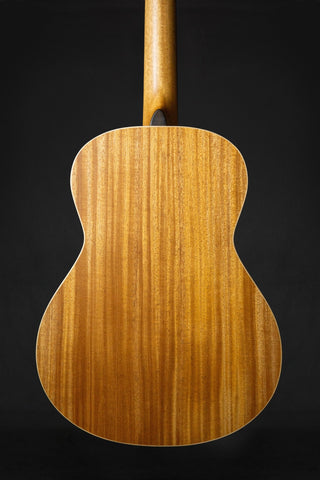
Geographical Origin: African Mahogany is found across tropical regions of Africa, including countries like Ghana, Cameroon, and Nigeria.
Tonal Characteristics: African Mahogany shares similarities with American Mahogany, offering warm, balanced tones with a strong midrange presence. It produces a mellow sound with good sustain, making it suitable for fingerpicking and light strumming.
Sustainability: African Mahogany is often sourced from well-managed forests. However, as demand increases, sustainable harvesting practices are crucial to prevent depletion.
Maple (Acer spp.)
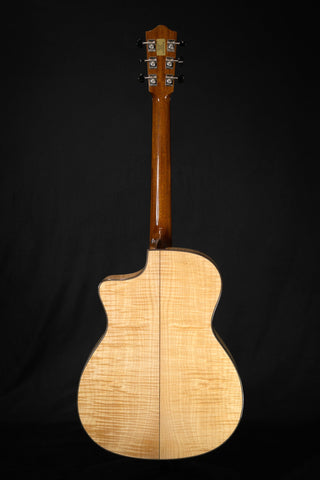
Geographical Origin: Maple trees are native to various regions of the Northern Hemisphere, including North America, Europe, and Asia.
Tonal Characteristics: Maple is prized for its bright, articulate sound with pronounced treble and tight bass response. It delivers clarity and definition, making it ideal for styles requiring precision and articulation, such as jazz and bluegrass.
Sustainability: Maple is generally abundant and widely available, but responsible forestry practices are still necessary to maintain healthy ecosystems.
Koa (Acacia koa)
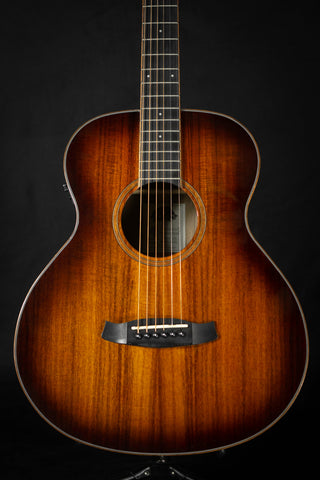
Geographical Origin: Koa is endemic to the Hawaiian Islands, where it grows in diverse ecosystems ranging from lowland dry forests to high-elevation rainforests.
Tonal Characteristics: Koa produces a unique, shimmering tone with a pronounced midrange and sparkling highs. It offers warmth and resonance, making it suitable for both strumming and fingerstyle playing.
Sustainability: Due to its limited geographical range and high demand, Koa faces sustainability challenges. Conservation efforts and selective harvesting are essential to preserve Koa forests for future generations.
Padauk (Pterocarpus soyauxii)
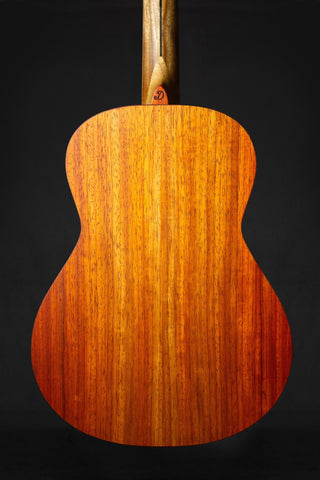
Geographical Origin: Padauk trees are native to tropical regions of Africa, primarily found in countries like Nigeria, Cameroon, and Ghana.
Tonal Characteristics: Padauk is known for its vibrant, resonant sound with a strong emphasis on the midrange. It offers excellent sustain and projection, making it suitable for bold strumming and rhythmic playing.
Sustainability: Padauk is not listed on CITES, but unsustainable logging practices threaten its populations. Sustainable forestry management is necessary to ensure its long-term availability.
Exotic Ebony (Diospyros spp.)
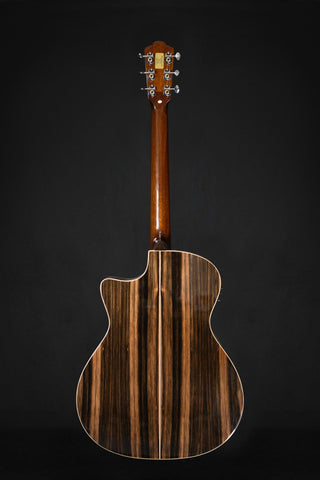
Geographical Origin: Ebony trees grow in various tropical regions worldwide, including parts of Africa, Asia, and the Pacific Islands.
Tonal Characteristics: Ebony produces a clear, focused sound with a tight bass response and crisp treble. It adds brightness and clarity to the guitar's tone, making it ideal for styles requiring articulation and precision.
Sustainability: Ebony species are often slow-growing and susceptible to overharvesting. Sustainable sourcing and ethical trade practices are crucial to protect Ebony forests and prevent illegal logging.
Black Limba (Terminalia superba)
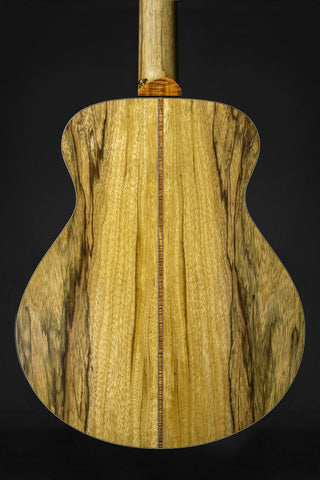
Geographical Origin: Black Limba trees are native to West Africa, particularly countries like Cameroon, Nigeria, and Ghana.
Tonal Characteristics: Black Limba offers a balanced sound with a warm, woody tone and pronounced midrange. It provides clarity and definition, making it suitable for a variety of playing styles, from fingerpicking to strumming.
Sustainability: Black Limba is not listed on CITES, but unsustainable logging practices threaten its populations. Sustainable forestry management and conservation efforts are necessary to ensure its continued availability.
Laminated vs. Solid Wood Construction
Laminated Back and Sides
Pros:
1. Affordability: Laminated woods are often more cost-effective than solid woods, making guitars more accessible to a wider range of musicians.
2. Durability: Laminated construction tends to be more resistant to changes in humidity and temperature, reducing the risk of warping or cracking.
3. Consistency: Laminated woods offer more consistent tonal properties across various guitars, providing predictability for manufacturers and players.
Cons:
1. Tonal Complexity: Laminated woods generally lack the depth and complexity of tone found in solid woods, resulting in a somewhat uniform sound across different guitars.
2. Resonance: Laminated construction may dampen the instrument's resonance and dynamic responsiveness compared to solid wood counterparts.
3. Aesthetics: Some players prefer the natural beauty and character of solid wood grain, which may be lacking in laminated construction.
Solid Wood Back and Sides
Pros:
1. Tonal Superiority: Solid wood construction typically offers richer, more complex tones with enhanced resonance and dynamic range.
2. Aging: Solid wood guitars tend to improve with age as the wood matures and the instrument's tonal characteristics evolve over time.
3. Aesthetics: Solid wood backs and sides showcase the natural beauty of the timber, with unique grain patterns and colors adding visual appeal.
Cons:
1. Cost: Solid wood guitars are often more expensive due to the higher cost of materials and the craftsmanship required for construction.
2. Susceptibility to Environmental Factors: Solid wood guitars may be more prone to damage from changes in humidity and temperature, requiring proper maintenance and care.
3. Inconsistency: Natural variations in wood grain and density can lead to differences in tone and resonance between individual guitars, which may not appeal to some players seeking uniformity.
Comparison Chart: Tonal Characteristics
Tonal Characteristics Comparison
| Wood Species | Tonal Characteristics | Suitable Playing Styles |
|---|---|---|
| Indian Rosewood | Rich, warm, complex; strong bass, clear midrange, highs | Fingerstyle, strumming |
| American Mahogany | Warm, balanced; emphasis on midrange | Blues, folk, country |
| African Mahogany | Warm, balanced; mellow sound with good sustain | Fingerpicking, light strumming |
| Maple | Bright, articulate; pronounced treble, tight bass | Jazz, bluegrass |
| Koa | Shimmering, warm; pronounced midrange, sparkling highs | Strumming, fingerstyle |
| Padauk | Vibrant, resonant; strong midrange | Bold strumming, rhythmic |
| Exotic Ebony | Clear, focused; tight bass, crisp treble | Articulate playing styles |
| Black Limba | Balanced, warm; woody tone, pronounced midrange | Fingerpicking, strumming |
In conclusion, the choice of back and side woods significantly influences the tonal characteristics and overall performance of an acoustic guitar. While each wood species offers unique sonic qualities and aesthetic appeal, it's essential to consider factors such as geographical origin, sustainability, and construction methods when selecting the ideal material for your instrument. Whether you prefer the warmth of Rosewood, the brightness of Maple, or the shimmering tones of Koa, there's a wood species suited to your playing style and musical preferences. Ultimately, the perfect guitar is a harmonious blend of craftsmanship, materials, and the player's personal connection to the instrument.
Written by:
Ryan Havinga





